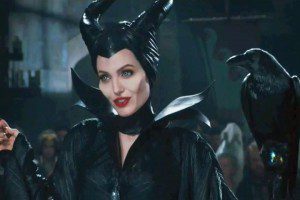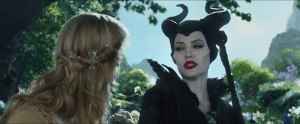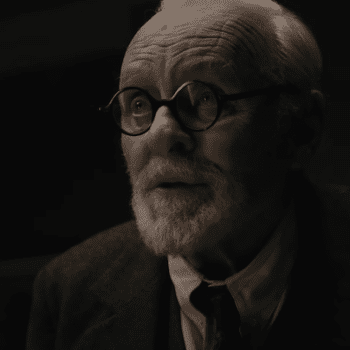 According to Augustine and a whole lot of subsequent theologians, evil isn’t really a “thing.” Only God can create things, and God didn’t create evil. It’s real enough, of course—but instead of a thing unto itself, it’s a corruption of something good that God made.
According to Augustine and a whole lot of subsequent theologians, evil isn’t really a “thing.” Only God can create things, and God didn’t create evil. It’s real enough, of course—but instead of a thing unto itself, it’s a corruption of something good that God made.
In Sleeping Beauty, Maleficent is about as evil as evil comes. She even calls herself the “Mistress of all Evil,” so there’s no mistaking where she stands. And as I’ve said elsewhere, I kinda liked her like that. Sometimes it’s nice to see someone boldly wear a black hat to the party. That way, we don’t have to have conflicted feelings or split allegiances when we listen to the story.
But in Disney’s Maleficent, out on video Tuesday, we get another picture of the old girl. And while our character grows more complex, it seems to better reflect our fallen world, our penchant for sin and the healing capacity of grace.
When we first meet Maleficent, she’s nowhere near the baleful figure she becomes. In fact, she’s a little girl. Sure, she’s got a pair of horns. But her real glory is her amazing wings. She was, maybe, a little like Adam and Eve back in Eden, before sin and temptation wormed their way into the garden: One of God’s creatures, marvelous and beautiful and innocent.
But like Adam and Eve led astray by a sneaky little serpent full of misleading promises, Maleficent trusted her one-time pal, Stefan, who offered a promise of his own: A promise of true love. Unlike Adam and Eve, there was no real original “sin” on Maleficent’s part. She was straight-up betrayed. Stefan drugged the fairy and cut off her wings while she slept.
 That act of betrayal corrupted Maleficent. It twisted her nature, turning her from something awesome and good into something … else. Her wings—which can be understood as a reflection of God’s nature in her—were taken. All that was left to her was her horns and her own hurt and anger. All that rage and pain contorted her soul into something deeply disfigured—and a sorceress who would live only to inflict pain on her tormentor.
That act of betrayal corrupted Maleficent. It twisted her nature, turning her from something awesome and good into something … else. Her wings—which can be understood as a reflection of God’s nature in her—were taken. All that was left to her was her horns and her own hurt and anger. All that rage and pain contorted her soul into something deeply disfigured—and a sorceress who would live only to inflict pain on her tormentor.
That is the Maleficent who became a villain of Disney legend—the one who lands in the castle in a plume of smoke and curses an innocent child to a death-like eternal sleep. Only true love can awake the princess, Maleficent decrees, a truly cagey pronouncement, given that Maleficent’s experience with Stefan tells her there is no such thing.
But then, almost 16 years later, something remarkable happens. Stefan’s daughter, Princess Aurora, meets Maleficent—this terrifying witch, this Mistress of all Evil. And in spite of the horns and black dress and intimidating cheekbones, Aurora loves her. And because she was loved, Maleficent became more lovable. She reclaimed her wings. The villain became the broken sinner, who then was redeemed to become the movie’s hero.
There’s something of us in that picture of Maleficent. We, too, have been hurt and betrayed. We, too, have sometimes fed our pain and anger until it twisted up in our guts, turning us into something that might be look a little like one of God’s most wonderful creations, but is far different than the person who God intended us to be. We’ve been twisted.
And yet, in spite of it all, God loves us. He loves us unconditionally.
Sometimes, we think we have to be loveable to be loved. And maybe in this world of ours, that’s sometimes true. But it’s not true in our relationship with God. He loves us when we’re at our most unlovable. He loves us, horns and all.













